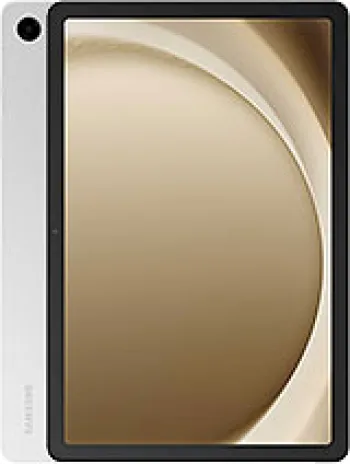
Overview
The Samsung Galaxy S II TV is a remarkable device that was released in 2013. It stood out during its time for its unique feature of incorporating a TV tuner, which allowed users to watch TV broadcasts directly on their mobile device. This was a particular appeal for markets where mobile TV broadcast services were available and prevalent.
Design and Build
The Galaxy S II TV is designed with dimensions of 121.2 x 62.7 x 9.8 mm and weighs just 115 g, making it a lightweight device that fits comfortably in one hand. It is equipped with a dual SIM feature, allowing users to manage two numbers simultaneously, which is especially useful for those who have separate work and personal lines.
Display
The device features a 4.0-inch TFT display with a resolution of 480 x 800 pixels. While the pixel density of ~233 ppi is modest by modern standards, it was quite sufficient for displaying clear images and text in its time. The screen-to-body ratio of approximately 59.9% ensures the device maintains a compact form factor without compromising too much on screen real estate.
Hardware and Performance
Under the hood, the Galaxy S II TV is powered by a dual-core 1.0 GHz processor, coupled with 1GB of RAM. This combination provided adequate performance for daily tasks such as web browsing, social media usage, and basic apps. The internal storage capacity is 4GB, which can be expanded via a dedicated microSDHC card slot, a highly valued feature for users needing more storage space for media and apps.
Camera Capabilities
The device hosts a 5 MP autofocus main camera with an LED flash and supports panorama shots. It can record videos at 720p@30fps, which was a reasonable specification for casual photography and videography. The front-facing VGA camera serves basic selfie and video calling needs.
Network and Communication
Supporting GSM and HSPA technology, the device can handle 2G and 3G bands, providing connectivity options typical for its release period. The HSPA 14.4/5.76 Mbps capabilities allow for decent internet speeds for streaming and downloading tasks.
Audio and Multimedia
The Galaxy S II TV offers a standard 3.5mm audio jack, making it easy to connect a variety of headphones or external speakers. Additionally, the built-in loudspeaker provides satisfactory audio output. Watching TV broadcasts or listening to music on this device would have been a pleasant experience with decent sound quality.
Operating System and User Interface
Operating on Android 4.2 Jelly Bean, the Galaxy S II TV provided an intuitive and user-friendly interface. This version of Android brought with it several enhancements over previous iterations, such as improved notifications, customizable home screens, and Google Now - a feature that offered contextual information to users based on their habits and preferences.
Connectivity and Sensors
In terms of connectivity, the device supports Wi-Fi 802.11 b/g/n and Bluetooth 4.0 with A2DP and aptX for improved audio quality over wireless connections. GPS functionality is included for location services, though NFC is notably absent. The microUSB 2.0 port facilitates data transfer and charging.
Additionally, the device is equipped with useful sensors like an accelerometer, proximity sensor, and compass, enhancing app functionality and user interaction.
Battery Life
The phone is powered by a removable Li-Ion 1500 mAh battery. While this capacity might seem limited by today’s standards, it was sufficient for facilitating the device's operations through a typical day when usage was moderate. The removable aspect is particularly advantageous as it allows users to replace the battery if needed to extend the device's longevity.
Conclusion
Although the Samsung Galaxy S II TV is now discontinued, it serves as a nostalgic reminder of how far mobile technology has come. It was a device that catered to specific user needs with its TV functionality, dual SIM capabilities, and a host of other features packaged in a sleek and convenient form factor. For its time, it was a satisfactory choice providing essential smartphone functionalities combined with unique television features, making it a versatile option for diverse entertainment and communication needs.
Key Features of Samsung Galaxy S II TV
- Supports Dual SIM functionality (Micro-SIM)
- Equipped with a TFT display of 4.0 inches
- Packed with a 5 MP autofocus main camera with LED flash and panorama capabilities
- Runs on Android 4.2 (Jelly Bean) operating system
- Powered by a dual-core 1.0 GHz processor
- Expandable storage with microSDHC card slot
- Includes essential connectivity features like Wi-Fi 802.11 b/g/n and Bluetooth 4.0
- Provides GPS for positioning
- Lightweight with a weight of 115 g
- Removeable Li-Ion 1500 mAh battery
Samsung Galaxy S II TV Drawbacks
- Discontinued model, meaning no updates or support from the manufacturer.
- Display Type: TFT, which might not offer the best color reproduction or viewing angles compared to modern screens.
- Low resolution camera (VGA) for selfies, which may not produce high-quality images.
- Limited internal storage of 4GB, which may be insufficient for modern app sizes and media storage.
- Older Android version (4.2 Jelly Bean), lacking access to modern app updates and features.
- NFC is not supported, limiting certain contactless payment options.
- Low battery capacity at 1500 mAh, possibly resulting in shorter battery life compared to modern smartphones.
- Processor is a Dual-core 1.0 GHz, which may lead to slower performance with current applications and multitasking needs.

View Also
More Phones
All Rights Reserved +14266 Phones © Mobilawy 2025

























